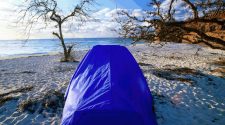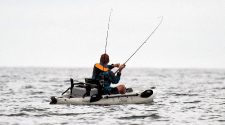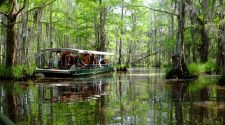Alaska is known for its open roads and magnificent scenery. And of course, there are the wild animals that attract a number of RVers to have a trip of a lifetime. However, driving the Alaska Highway can be a challenge for many. Most of the highway of this part of the country is two-lane and well paved. Moreover, they have easy grades and gentle curves. The challenge comes when you are driving highways that have stretches of gravel along with dust and mud. Due to the winter’s freezing temperatures, some of the roads have rough surface. But there is nothing to worry, if you take it easy and drive slow. Apart from numbers, Alaska highways also have names. Along the road, you will even find small signs with numbers, which are mileposts indicating mileage.
RVers who are driving Alaska highways for the first time needs to be careful about the moose; they often cause traffic crashes and traffic fatalities. Moose usually ignore people and human activities, though they will comfortably pose for a picture or two. They generally move around in search of food. And during winter when finding food is difficult, they are likely to wander into highways and local roads. And if you come across one or two remember not to feed them and give them at least 50 feet.
Alaska weather needs to taken into consideration when planning a trip with your recreational vehicle. It will be still cold and wet even in the early June; however, July and August are likely to be warm and mild. You can expect light snow around mid-September.
Though food and fuel (especially unleaded gasoline and diesel fuel) are readily available in Alaska, be prepared for major repair facilities. You may find some of the major parts of your recreational vehicle in the big Alaskan cities like Fairbanks and Anchorage, but it is better to carry spare parts of your recreational vehicle. These may include fan belts, spare tires, electrical fuses, heater hose, a chain or a tow strap, a duct tape, and flares and a small water bucket. However, for small repairs you can refer to the auto parts stores, which are found in almost all the communities.
For RV campgrounds there are plentiful in Alaska. You will find both public and private RV camping grounds that offer hookups. In general, most of these RVG campgrounds offer toilet, water and firewood. Some of these campgrounds also have dump stations. But such facilities may charge an addition user fee. While driving your recreational vehicle you will also find dump stations, but they are usually located outside of the cities. These dump stations use a septic tank to dispose of waste. Some may even use drainage field system.
Grocery stores and convenient shops are found in every community. In addition, there are supermarkets and malls in larger cities where you can refill the supplies for your recreational vehicles. Restaurants and eating establishments are readily available in all the communities.
And for Alaskan wildlife, which might have motivated you to take a trip with the recreational vehicle, you need to be up early in the morning to see a lot of wildlife. You may even watch them late at night.





